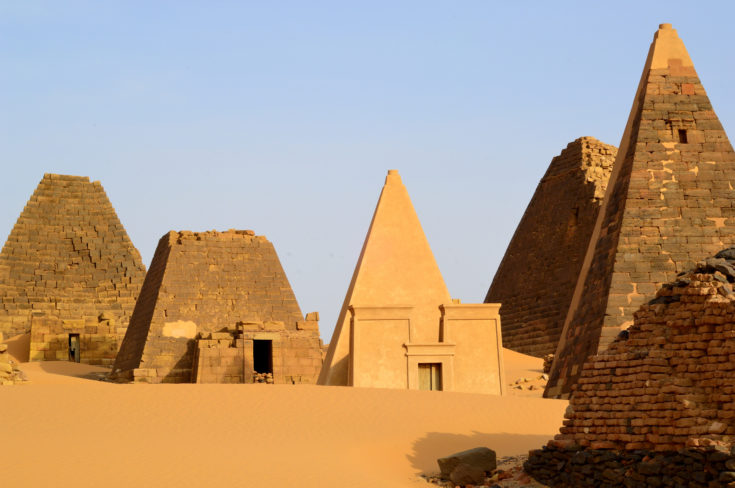You can’t mention the country Egypt without almost immediately thinking about the iconic pyramids. The pyramids of Egypt are one of the most-visited attractions in the region, especially as the Pyramid of Khufu in Giza is the only Seventh Wonder of the Ancient World that still exists. But Sudan shouldn’t be missed.
On average, more than 9 million people visit the pyramids in Egypt, but there is a place that boasts more pyramids than Egypt: Sudan.
The country has between 200 and 250 pyramids compared to Egypt’s roughly 138, making it the country with the most pyramids.
Located in the eastern desert of Sudan, the Meroe Pyramids which are part of the Nubian Pyramids, were built far later than Egypt’s world wonder.
The area of the Nile valley, known as Nubia, which now lies in what we know today as Sudan, was home to three Kushite kingdoms that ruled areas along the Nile River from around 2600 BC to 350 AD. According to the African Exponent, the first kingdom’s capital was located in Kerma between 2600 and 1520 BC. The second was centered in Napata between 1000 and 300 BC, and the last kingdom was based around Meroë between 300 BC and AD 300.
While the Kushites started building pyramids about 500 years after the Egyptians, both cultures used them for burial customs.
One key difference is the sizing of the pyramids. The average Kushite pyramid stands anywhere between 20 and 98 feet tall, while the average Egyptian pyramid is a little more than 450 feet tall.
And when it comes to boasting the world’s largest pyramid, you will have to travel to the other side of the world as Mexico’s Great Pyramid of Cholula—which is actually hidden inside a mountain— is the largest.
It’s important to note that the U.S. Department of State recently issued a Level 4 “Do Not Travel To Sudan” advisory due to crime, terrorism, civil unrest, kidnapping, and armed conflict.





